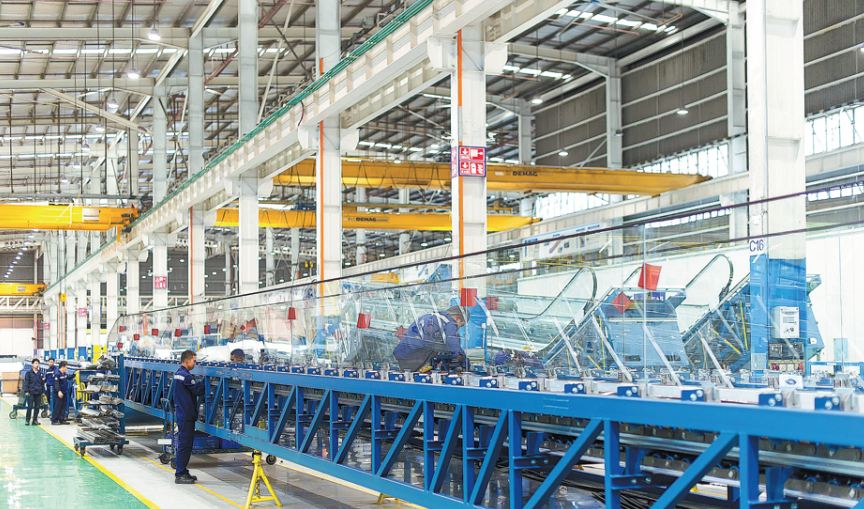Fiscal, monetary measures set to support real economy


GDP growth to stay at 6.2% in first half before rebounding to 6.3%, says CASS
China's GDP growth is expected to stabilize at 6.2 percent during the first six months of this year, before rebounding in the September-to-December period to reach 6.3 percent whole-year growth, data from the country's leading think tank, the Chinese Academy of Social Sciences (CASS) showed on Monday.
Tax and fee cuts, further reduction of financial institutions' cash reserves and a strong wave of infrastructure investment will support the economic recovery, and finally achieve the annual target of between 6 to 6.5 percent growth, said Zhang Ping, deputy head of the National Institution for Finance and Development under the CASS.
The research evaluated the government's macroeconomic policy package for 2019 as "balanced", without large expansion of fiscal deficit and the overall debt growth target as "moderate".
Fiscal policy adjustments, led by the value-added tax cuts from Monday, may lift the annual GDP by 0.3 to 0.4 percentage point. The monetary policy, which still has room to ease, especially from further cuts in the reserve requirement ratio, will play a key role to offset potential deflation risks in the manufacturing sector, according to Zhang.
Investors are speculating that the central bank will launch another RRR cut, as early as the first half of April, given the still-tight liquidity in financial markets and a potential increase of interest rates. The central bank has cut the RRR five times since last year.
Meanwhile, a contraction was seen in the prices of industrial products during the first two months of this year, as the Producer Price Index (PPI) dropped to 0.1 percent by the end of February from 0.9 percent in December, according to data from the National Bureau of Statistics.
The CASS research report said further attention is necessary to tame deflation risks, especially those from the industrial sector, because further weakening of the PPI may lead to a fall in the return on capital of companies, reduce asset values and increase debt pressure. Hence, banks may become more cautious in lending money to companies, and increase interest rates.
Li Yang, head of the National Institution for Finance and Development, said that the fiscal policy and the monetary policy should strengthen connection and coordination, to support the development of "real economy".
"The original reason for financial risks is high leveraging, which requires deleveraging to be a long-term task," said Li.
He also said that one of the key jobs for financial regulators is to build a comprehensive supervision system, both online and offline, to tighten controls on capital flows, both internally and across the border.
Besides, market-oriented pricing systems for treasury bond yields, interest rates, and foreign exchange rates will make steady progress this year.
To improve investment efficiency, Lian Ping, chief economist at Bank of Communications, suggested channeling of more funds from the banking sector to the stock market. A possible method is allowing commercial banks setting up subsidiaries to invest in securities companies, but more work needs to be done, including changes in existing policies.




































